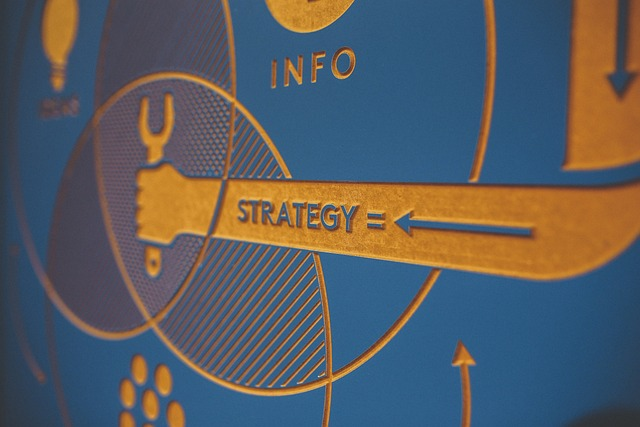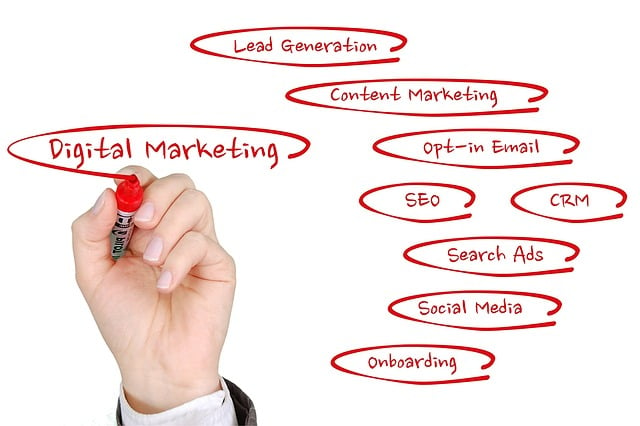What is the Difference Between Business Strategy and Marketing Strategy?

What is the difference between business strategy and marketing strategy? It’s a question that often leaves even seasoned professionals pondering. Understanding these distinctions is crucial for any organization striving for success in today’s competitive landscape. By delving into these two essential facets, you can unlock new growth opportunities and sharpen your approach to achieving long-term goals.
What is Business Strategy?
Business strategy is the plan companies use to achieve their overall goals, focusing on long-term growth and competitive positioning.
What Business Strategy Focuses On

Identifying Core Values and Mission Statement
Business strategy focuses on defining the company’s core values and mission statement. These elements provide the foundation for all decision-making processes within the organization. For instance, a company with a mission to innovate might prioritize R&D and continuous improvement.
This strategic approach ensures that every action aligns with the company’s overarching goals and values, creating a cohesive path towards success.
Analyzing Market Trends and Competitive Landscape
A key aspect of business strategy is analyzing market trends and the competitive landscape. Understanding industry trends helps businesses identify areas for growth and potential threats.
For example, a tech company might monitor advancements in artificial intelligence to stay ahead of competitors.
This deep understanding allows for proactive adjustments in the overall business strategy, ensuring sustained competitive advantage in the marketplace.
Setting Long-term Business Goals and Objectives
Business strategy sets long-term goals and objectives that guide the company’s direction.

These goals often encompass revenue growth, market share expansion, and increased customer satisfaction. By establishing clear, measurable objectives, businesses can develop strategies to achieve them.
For instance, a retail company may set a goal to expand into new markets, thereby increasing its customer base and revenue with brand strategy.
Resource Allocation and Strategic Decision Making
Effective resource allocation is a cornerstone of business strategy. Companies must decide where to invest time, money, and effort to maximize returns.
This involves strategic decision-making to prioritize projects that align with business goals.

For example, a pharmaceutical company might allocate more resources to developing a groundbreaking drug that promises high returns.
This focused investment helps in achieving a sustainable competitive advantage and drives long-term business growth.
What is Marketing Strategy?
Marketing strategy defines a company’s approach to promoting its products or services, focusing on identifying target audiences and meeting customer needs to achieve business goals.
What Marketing Strategy Focuses On

Understanding and Segmenting the Target Market
A successful marketing strategy begins with understanding and segmenting the target market. This involves conducting market research to identify distinct customer segments, each with unique needs and preferences.
For example, a fashion brand may target segments based on age, style, and buying behavior.
By doing so, the company can tailor its marketing efforts to effectively communicate with each segment, ensuring that the marketing mix resonates with the intended audience.
Crafting a Compelling Value Proposition and Brand Messaging
Marketing strategy defines the value proposition and brand messaging that distinguish a company from its competitors.

This involves articulating the unique value and benefits of the products or services offered. For instance, a tech company might highlight its innovative features and superior customer support as key selling points.
Clear and consistent brand messaging, aligned with the brand’s values, helps in building a strong brand identity and increasing customer lifetime value.
Developing a Comprehensive Marketing Plan
A comprehensive marketing plan outlines the specific marketing tactics and activities that will be used to achieve the overall marketing goals.

This includes decisions on the marketing mix, content marketing strategies, public relations efforts, and distribution channels. For example, a software company might use a mix of online ads, email campaigns, and social media to reach its target audience.
A well-defined marketing plan ensures that all marketing activities are aligned with the company’s strategic marketing objectives.
Implementing and Adjusting Marketing Tactics
The execution phase of a marketing strategy involves implementing various marketing tactics and continuously monitoring their effectiveness.
This includes adjusting the pricing strategy, optimizing content marketing efforts, and fine-tuning distribution channels based on market feedback and performance metrics.
For example, an e-commerce business may tweak its pricing policy to better align with customer expectations and competitive pressures.
By focusing on these adjustments, companies can retain customers, increase sales, and ensure long-term success in a dynamic market environment.
Marketing Strategy vs Business Strategy: Key Differences

Strategic Focus: Big Picture vs. Customer-Centric Tactics
When examining what is the difference between business strategy and marketing strategy, the primary distinction lies in their focus.

Business strategy centers on the big picture, outlining the overall direction and long-term goals of the company.
It encompasses everything from market positioning to resource allocation, aiming to achieve a sustainable competitive advantage.
In contrast, marketing strategy focuses on specific customer-centric tactics to meet immediate market demands and drive sales.
Marketing strategies are developed to engage the target audience, address customer needs, and effectively communicate brand messaging to achieve short-term and mid-term objectives.
Goal Orientation: Long-Term Growth vs. Immediate Market Impact
Business strategy aims for long-term growth and sustainability, setting the course for the company’s future by identifying growth opportunities and defining the company’s core values and mission.
It looks at the market landscape, competitors, and internal capabilities to craft a roadmap that ensures long-term success.

Conversely, marketing strategy is more concerned with immediate market impact and meeting short-term objectives.
It involves crafting a detailed marketing plan, including specific marketing tactics, to reach target customers, boost sales, and enhance brand visibility in the current market environment. This strategic and tactical interplay defines the business strategy and marketing dynamics.
Resource Allocation: Comprehensive vs. Targeted
In the debate of strategy vs. strategy, another key difference is in resource allocation.
Business strategy involves comprehensive resource allocation, deciding how to invest in various areas such as R&D, operations, and new market entry.

It ensures that resources are utilized efficiently to support the overall business strategy.
On the other hand, marketing strategy involves targeted resource allocation, focusing on specific marketing activities that drive customer engagement and sales.
This includes budget allocation for advertising, content marketing, market research, and other marketing efforts that directly impact the target audience and address their pain points.
Market Perspective: Broad Analysis vs. Customer Insights
Business strategy takes a broad market perspective, analyzing market trends, industry shifts, and competitive dynamics to identify long-term direction and growth opportunities.

It is about understanding the market at a macro level and positioning the company to exploit these insights.
In contrast, marketing strategy is more about deep customer insights.
It involves detailed market research to understand customer behavior, preferences, and needs. By developing a keen understanding of the target segments, marketing strategy tailors marketing activities to meet these needs, thereby enhancing customer satisfaction and loyalty.
Integration and Execution: Strategic Framework vs. Tactical Implementation
Business strategy provides a strategic framework within which all company activities align, ensuring that every action taken contributes to the overarching goals and vision.
It sets the foundation for the company’s direction, including decisions about entering new markets, developing new products or services, and building a competitive advantage.
Marketing strategy, however, is about tactical implementation within this framework.

It translates the overall business strategy into actionable marketing tactics, such as creating a marketing action plan, developing brand messaging, and executing campaigns.
The effective integration of business strategy and marketing is crucial for the company to achieve both long-term and short-term objectives.
Myth Busting: Common Misconceptions about Business Strategy and Marketing Strategy
Myth 1: Business Strategy and Marketing Strategy are the Same Thing
One common misconception is that business strategy and marketing strategy are identical. In reality, business strategy focuses on the overall direction and long-term goals of the company, encompassing aspects like resource allocation, core values, and growth opportunities.

Marketing strategy, on the other hand, is more about the specific tactics used to reach the target audience and meet customer needs, such as content marketing, brand messaging, and marketing plan development.
Understanding what is the difference between business strategy and marketing strategy is crucial for effective strategic planning.
Myth 2: Marketing Strategy Only Involves Advertising
Another myth is that marketing strategy is solely about advertising. While advertising is a component, marketing strategy is much broader and includes market research, identifying customer needs, developing a brand strategy, and creating a comprehensive marketing plan.

It encompasses various marketing tactics aimed at engaging customers and building brand values, such as social media marketing, public relations, and content marketing.
Effective marketing strategy integrates these elements to address customer needs and achieve business objectives.
Myth 3: Business Strategy is Only for Large Corporations
Many believe that only large corporations need a business strategy.
This is misleading because every business, regardless of size, needs a strategic framework to guide its long-term direction and decision-making processes.

A well-defined business strategy helps small and medium-sized enterprises (SMEs) identify growth opportunities, align their core values with their actions, and set realistic long-term goals.
By developing a strategic approach, even small businesses can achieve a sustainable competitive advantage and navigate their path to success.
Conclusion
Understanding the distinct roles of business strategy and marketing strategy is essential for any organization aiming for success. While business strategy focuses on the overall direction, long-term goals, and resource allocation, marketing strategy hones in on specific tactics to engage target audiences and meet customer needs.
By clearly distinguishing and integrating these strategies, companies can create a cohesive plan that drives growth and competitive advantage. Now that you’re equipped with this knowledge, it’s time to apply these insights to your own strategic planning. Good luck!



